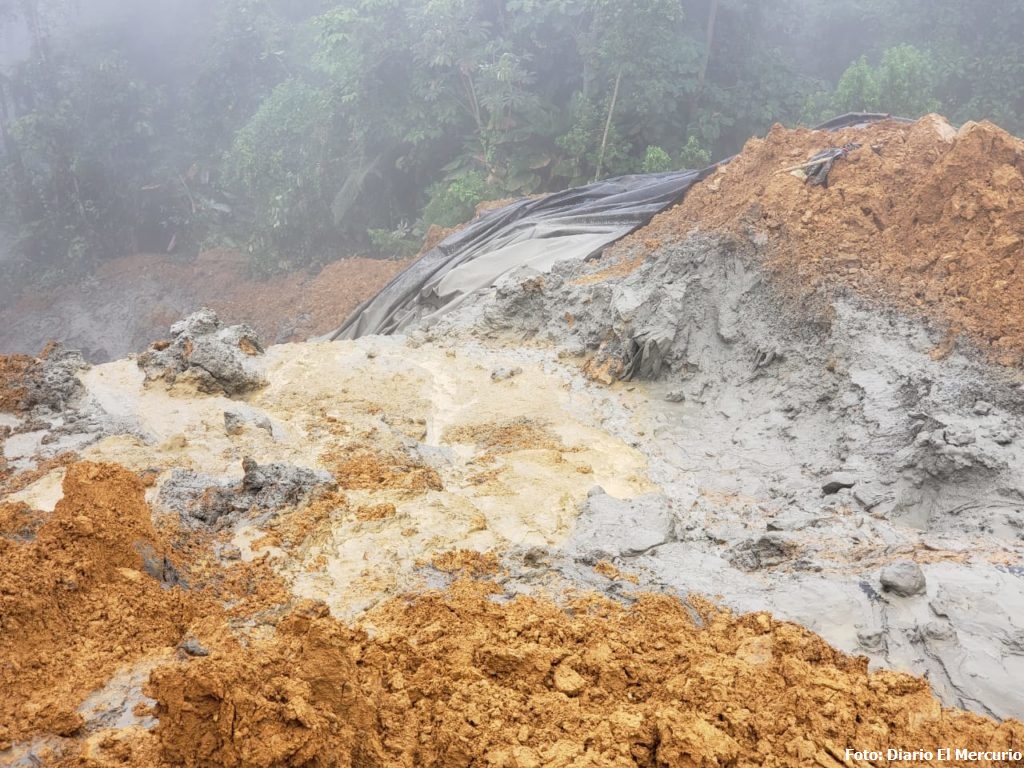Tailings dam collapsed in the province of Azuay, Ecuador
The recent collapse of a tailings dam in Ecuador confirms once again the potential damage the country could suffer if the government continues to promote metal mining projects. The social and environmental impact does not outweigh the limited economic benefits.
On Thursday 2nd of July 2020, a tailings dam of a mine in the province of Azuay in the south of Ecuador collapsed, spilling more than 50 tons of toxic mining waste in the river Tenguel. This happened in the canton of Ponce Enríquez, directly affecting the community of Santa Martha. The spill occured on the “Armijos” plant, owned by the Ecuadorian company Austro Gold Ltda. Mining activities on the plant have currently been suspended.
The Ministry of Energy and Non-Renewable Natural Resources reported in an official statement on the 3rd of July that inspections are carried out in the region to assess the environmental damage caused by the spill. The Ministry in its official communication minimizes the impacts and maintains the discourse that responsible mining in Ecuador is possible. Local authorities too downplay the impact of the current events. The mayor of the town Ponce Enríquez adheres to the possibility of ‘‘mining without contaminating the water”.
Environmental and human rights organisations refer to the recent tailings collapse as evidence that responsible mining, as the Ecuadorian government is proclaiming, does not exist. The 50 tons of toxic sediments that flowed into the Tenguel river are a clear sign of the unsustainability of the ‘legal’ mining industry.

The mine in Ponce Enríquez, operated by the company Austro Gold Ltda, is a rather small mine compared to the strategic, mega-mining projects in the country such as El Mirador or Fruta del Norte. However, environmental experts consider the recent events in Ponce Enríquez as a warning sign for the possible devastation that larger mining projects can cause, referring to the recent disaster in Brumadinho (Brasil, January 2019).
In comparison with the large scale copper project El Mirador in the province of Zamora Chinchipe, experts point out that the 50 tons of chemical waste, polluting the environment in Ponce Enríquez, equivalate to the waste that the Mirador mine will soon produce in only 1 minute and 13 seconds of its operations.
The Mirador mine, which started a first production phase in July 2019, will process 60.000 tons of rock material on a daily basis, of which 58.800 tons will be toxic waste. If a tailings spill would occur on the Mirador site, the impacts would be devastating. Scientists have already sent out clear warnings about the Mirador project, highlighting the risks of a 260 m high tailings dam, which is currently under construction, in a geophysically sensitive zone, characterized by high rainfall and prone to earthquakes.

The Ecuadorian government and the mining companies carry the obligation and responsibility to remediate affected water sources. Nevertheless, the social and environmental damage in Azuay has been done, affecting aquatic life and communities dependent on the river in their daily lives.
The current approach of the Ecuadorian government is to promote the mining sector as the solution for the economic difficulties that the country is facing. The mining industry has been impulsed during the COVID-19 quarantaine measures and is seen as a post-pandemic exit strategy. However, this policy does not take in account the economic, social and environmental consequences of mining, as the recent events in Ponce Enríquez made brutally clear.



